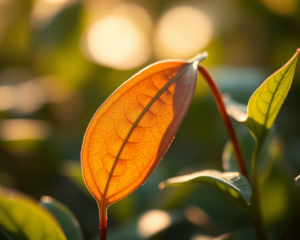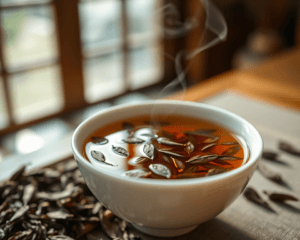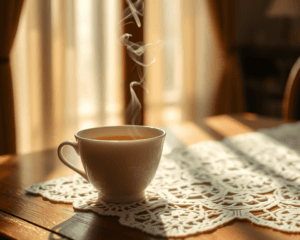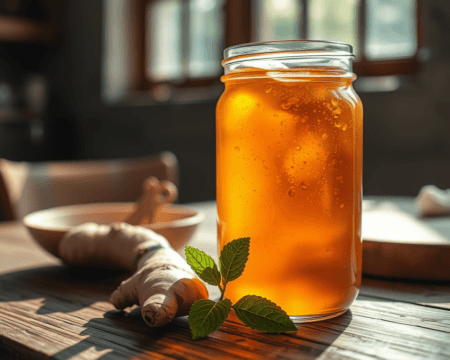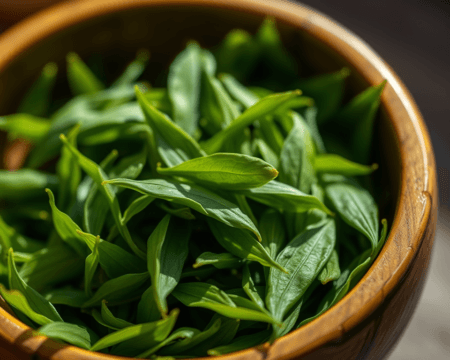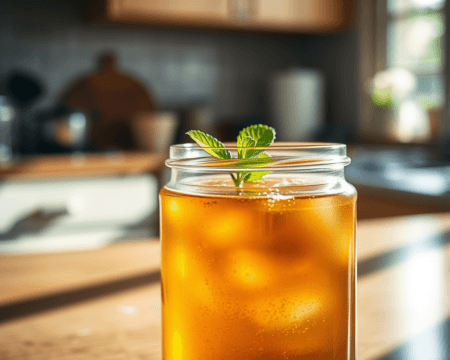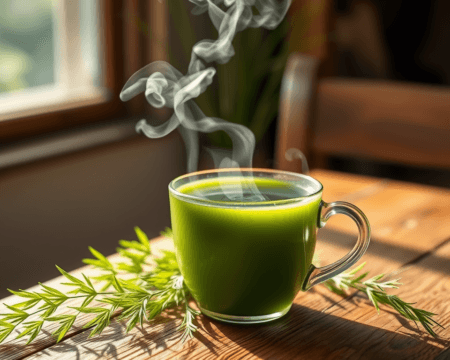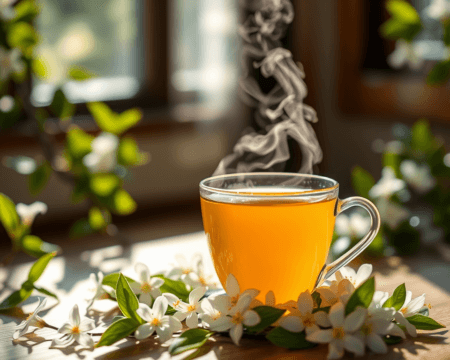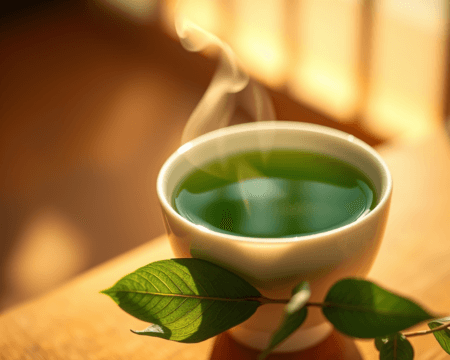Are you trying to figure out whether oolong tea is the right pick for your caffeine fix or health routine? You’re not alone; many folks have been down this rabbit hole. The vast tea universe is full of surprises, especially when it comes to caffeine levels and health benefits. Oolong tea, with its unique, fragrant twist, often flies under the radar compared to its siblings, green and black tea. But here’s the thing—just because it’s lesser-known doesn’t mean it lacks punch. Whether you’re a casual drinker or an avid tea enthusiast, understanding the caffeine content in oolong and how it stacks up against other teas is crucial for making informed choices. Buckle up—this is gonna be a ride through a world of flavor, energy, and health insights.
Key Takeaways
- Oolong tea generally contains about 30-50 milligrams of caffeine per 8-ounce cup, making it a middleweight contender in the tea arena.
- Brewing time and temperature can significantly impact caffeine extraction—get those variables right for maximum benefits.
- Moderate caffeine consumption has potential health benefits like improved focus and increased metabolism, but be mindful of the side effects, especially for caffeine-sensitive individuals.
- Oolong tea is rich in antioxidants, contributing to heart health and cognitive performance, but excessive consumption can lead to adverse reactions.
Understanding Caffeine Content in Oolong Tea
What is Caffeine and How is it Measured?
Let’s start with what caffeine actually is. Caffeine is a natural stimulant that helps us feel more alert and focused. It’s found in various sources, particularly in coffee, tea, soft drinks, and even energy drinks. The caffeine scale generally rates it in milligrams (mg), which is how you measure how “juiced up” your drink is.
For context:
– For coffee, you might be looking at 95-200 mg per cup.
– Energy drinks can clock in even higher, ranging from 80 mg up to 500 mg depending on the brand.
– And for good ol’ green tea, you’re usually looking at around 20-45 mg per 8 ounces.
Now, when it comes to caffeine content in oolong tea, it typically sits between green and black tea. Expect around 30-50 mg per 8-ounce cup. Just enough to perk you up without setting your heart racing. If you’re curious about where your favorite beverages stack up, check this out:
| Beverage Type | Caffeine (mg per 8 oz) |
|---|---|
| Oolong Tea | 30-50 |
| Green Tea | 20-45 |
| Black Tea | 40-70 |
| Coffee | 95-200 |
| Energy Drinks | 80-500 |
Caffeine Levels in Oolong Tea versus Other Teas
When you put oolong tea side by side with black and green teas, it’s a real eye-opener.
- Oolong vs. Black Tea: Black tea typically has more caffeine, landing between 40-70 mg per cup. So, if you’re craving a boost, black’s your friend.
- Oolong vs. Green Tea: Comparatively, green tea’s caffeine content usually falls around 20-45 mg. If you’re all about a lighter buzz, green might suit you better.
Oolong’s middle-of-the-road caffeine levels make it super versatile. Whether you’re looking to kickstart your morning or get a slight focus boost in the afternoon, oolong serves as a happy medium.
Brewing Process and Its Effects on Caffeine Extraction
How Brewing Time and Temperature Influence Caffeine Content
Now, here’s where it gets interesting. The way you prepare your tea can change your whole experience—especially in terms of caffeine! Think about brewing time and temperature as your magical switches for caffeine extraction.
- Brewing Time: Generally, the longer you steep your tea, the more caffeine you extract. With oolong, aiming for about 3 to 5 minutes is ideal for optimal caffeine release. Go for longer, and you’re asking for bitterness; go for shorter, and you might be swindling yourself out of that caffeine punch.
- Temperature: Another game changer is the water temperature. For oolong, the sweet spot ranges from 190°F to 205°F (just below boiling). Higher temps? You’re looking at more extraction. Lower? Not so much.
If you want to fine-tune your caffeine hit, mess around with these variables. Honestly, it’s all about preference and how you’re feeling that day!
The Best Practices for Brewing Oolong Tea
Let’s talk about the art of brewing oolong tea. The variety of oolong teas is vast, ranging from floral and fruity to rich and toasty. Here are some best practices that’ll help you unlock the full flavor profile while eyeing that caffeine content:
- Quality Matters: First off, invest in high-quality oolong. Brands like Taiwanese Ali Shan Oolong or Wuyi Rock Oolong are stellar options, bringing robust flavors along with that caffeine kick.
- Rinse Before Brewing: A quick rinse with hot water not only cleans the leaves but also prepares them to release their flavors and caffeine better.
- Use the Right Amount: A standard ratio is about 1-2 teaspoons of tea leaves per 8 ounces of water. The more leaves, the more caffeine and flavor!
- Mind Your Water: Always use filtered water for the best taste.
Implement these tips, and you’ll not only enjoy a fantastic cup of oolong but also make the most of its caffeine content.
Health Benefits and Side Effects of Oolong Tea
Potential Benefits of Moderate Caffeine Consumption
Let’s break it down—why should you care about the caffeine in oolong tea? Well, moderate caffeine consumption can have a handful of health benefits. Research supports a link between caffeine and improved cognitive function, enhanced physical performance, and even a boost to your metabolism. If you’re hitting the gym or cracking down on work, oolong might just be your handy sidekick.
Oolong is also packed with antioxidants, which can battle oxidative stress. We’re talking about reducing the risk of chronic diseases and potentially improving cardiovascular health. A cup of oolong not only fuels your focus but also acts as a line of defense against health issues.
Possible Side Effects of Oolong Tea Due to Caffeine
But hold on a sec—it’s not all sunshine and rainbows. Caffeine isn’t for everyone. For individuals sensitive to caffeine, even that moderate amount found in oolong can lead to jitters, anxiety, or sleep disturbances. If you’re guzzling multiple cups a day, you might experience some adverse reactions like headache or palpitation.
You see, our bodies react differently to caffeine. While some are resilient and enjoy the benefits, others need to tread cautiously. If you notice your heart racing or you can’t seem to sleep at night after that 3 PM cup, consider toning it down.
Cultural Context and Historical Significance of Oolong Tea
Oolong Tea in Traditional Cultures
Now, let’s add some flavor to the mix—cultural context! Oolong has deep roots in Chinese traditions, especially in Fujian and Guangdong provinces. These regions not only produce some of the finest oolongs in the world, but they also celebrate the tea drinking process as an art form.
In traditional tea ceremonies, oolong tea embodies more than just a drink; it represents mindfulness, patience, and respect for nature. You’ll often see it paired with intricate rituals that spotlight the delicacy of each infusion. It’s more than sipping tea; it’s a whole experience, a moment to reconnect with both yourself and the rich heritage behind every leaf.
Regional Varieties of Oolong Tea and Their Characteristics
Speaking of richness, let’s explore some regional oolong varieties you absolutely must try. Each brings its own unique characteristics to the table:
- Tie Guan Yin (Iron Goddess of Mercy): This is one of the most well-known oolongs, offering a sweet, floral note. It’s often lightly oxidized, making it a treat for those who love fragrant teas.
- Wuyi Rock Tea (Yan Cha): Hailing from the rocky mountains, this variety has a roasted flavor profile with hints of caramel and nut. Perfect for those who crave something with depth.
- Ali Shan Oolong: Grown in Taiwan, it presents a buttery, smooth flavor with a floral aroma. It’s a higher elevation tea, which intensifies its flavor and aroma.
These varieties not only deliver diverse tastes but also reflect the rich terroir of where they come from. If you think oolong is just a boring cousin of green and black tea, think again!
Whether you’re reaching for that cup for a caffeine kick or to bask in cultural richness, oolong tea puts a spotlight on the finer things in life. Enjoy it, savor it, and appreciate the traditional art behind every sip!
Frequently Asked Questions
How is oolong tea different from other types of tea?
Oolong tea is distinct because it undergoes a unique oxidation process, placing it between green (unoxidized) and black (fully oxidized) teas. This results in its characteristic flavor, aroma, and caffeine content, offering a unique taste experience.
What are the best brewing temperatures for oolong tea?
The optimal brewing temperature for oolong tea typically ranges from 190°F to 205°F (88°C to 96°C). Lower temperatures may not extract its full flavor, while higher temperatures can make the tea bitter. Adjusting the temperature can enhance the drinking experience.
Can oolong tea help with weight loss?
Oolong tea may support weight loss by boosting metabolism and fat oxidation due to its caffeine and antioxidant content. However, it should be combined with a balanced diet and exercise for effective results rather than relied upon solely for weight loss.
How much oolong tea is safe to drink daily?
Moderate consumption of 3-4 cups per day is generally considered safe for most people. However, it’s essential to monitor your body’s response, especially if you’re sensitive to caffeine, as excessive intake can lead to side effects like insomnia or jitteriness.
What are the antioxidant benefits of oolong tea?
Oolong tea is rich in polyphenols, a type of antioxidant that helps combat oxidative stress in the body. These antioxidants can promote heart health, support immune function, and enhance cognitive performance, contributing to overall well-being.
Is oolong tea suitable for everyone?
While oolong tea has numerous health benefits, those sensitive to caffeine or with specific health conditions should consult a healthcare professional before consuming it. Pregnant individuals and certain medical patients are typically advised to limit caffeine intake.
How does brewing time affect the flavor of oolong tea?
Brewing time significantly influences the flavor intensity of oolong tea. A shorter brewing time (around 3 minutes) typically yields a lighter taste, while a longer steeping time (up to 7 minutes) can create a bolder, richer flavor profile. Experiment to find your preferred taste.
Can oolong tea be consumed cold?
Yes, oolong tea can be enjoyed both hot and cold. Allowing it to cool or brewing it for iced tea offers a refreshing alternative, especially in warmer weather. Cold-brewing can also enhance its natural flavors and aromas.
Are there any side effects associated with oolong tea?
While oolong tea is generally safe, excessive consumption can lead to side effects such as increased heart rate, anxiety, digestive issues, or insomnia, particularly in caffeine-sensitive individuals. Moderation is key for enjoying its benefits without adverse reactions.
